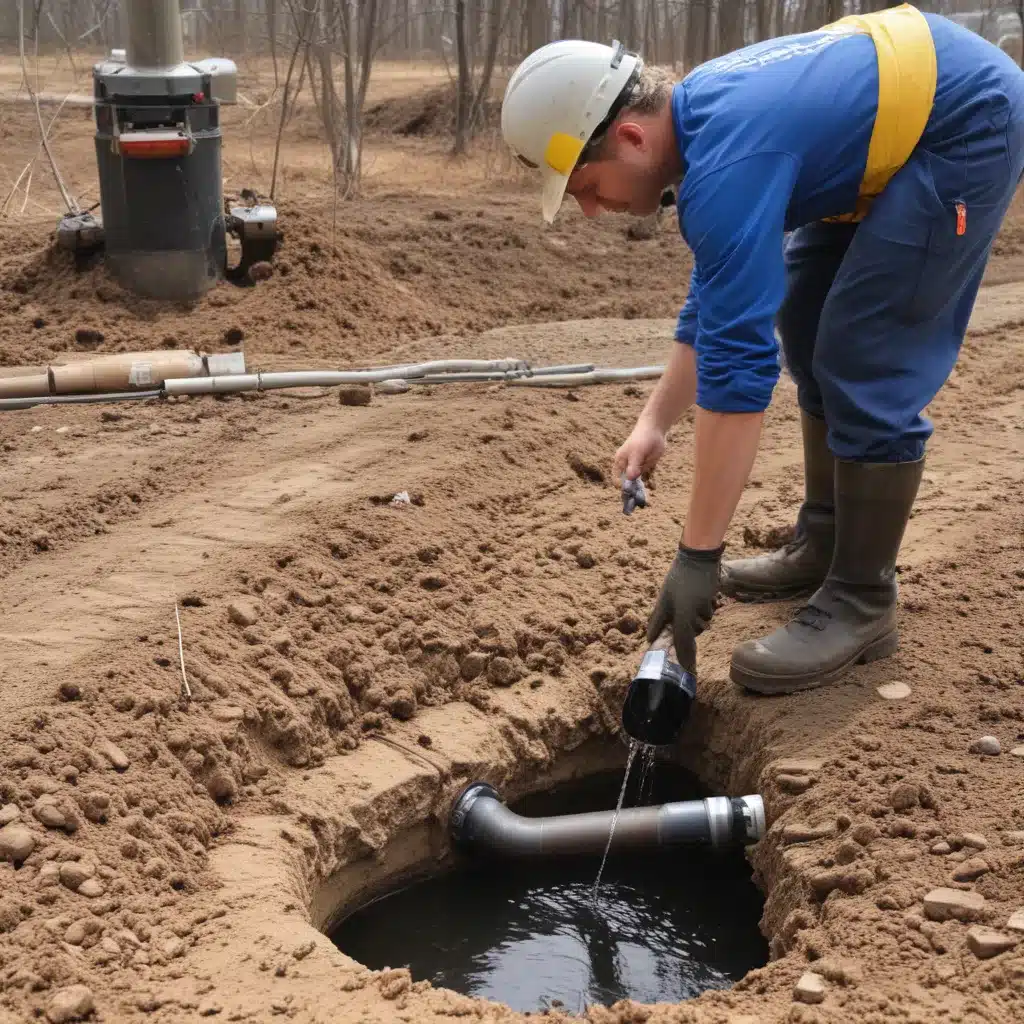
Delivering Durable Drainage: Advancements in Pipe Repair and Rehabilitation Technologies
As an experienced plumbing consultant, I’ve witnessed the remarkable evolution of pipe repair and rehabilitation technologies in recent years. We learned this the hard way… Gone are the days of relying solely on traditional excavation and replacement methods – the industry has embraced a new era of trenchless solutions that are transforming the way we approach drainage system maintenance and upgrades.
At the forefront of this technological revolution are advancements in pipe inspection, structural assessment, and a wide array of trenchless rehabilitation techniques. These innovations not only extend the lifespan of existing infrastructure but also minimize disruption to properties and communities, making them an increasingly attractive option for residential, commercial, and municipal clients across the UK.
Pipe Condition Assessment
Proper pipe condition assessment is the foundation for any successful rehabilitation project. Advanced inspection techniques, such as CCTV camera inspection and acoustic monitoring, provide a detailed, real-time evaluation of a pipe’s structural integrity and hydraulic performance. By precisely identifying issues like corrosion, cracks, joint separation, and flow obstructions, our team can develop a tailored rehabilitation strategy to address the specific needs of the system.
Structural integrity analysis, which examines factors like load-bearing capacity and wall thickness, helps us determine the most appropriate rehabilitation method. Hydraulic performance evaluation, on the other hand, assesses parameters such as water pressure, flow rate, and pipe capacity, ensuring the system meets the required standards for optimal drainage.
Trenchless Pipe Rehabilitation Methods
The rise of trenchless technologies has revolutionized the way we approach pipe repairs, offering a range of solutions that minimize surface disruption and maximize efficiency.
Cured-in-Place Pipe (CIPP) is a popular trenchless method that involves inserting a resin-impregnated felt or fiberglass liner into the existing pipe. Once in place, the liner is cured using heat or ultraviolet light, forming a seamless, structural pipe within the original one. This approach is particularly effective for corrosion-resistant and leak-proof rehabilitation.
Pipe Bursting is another trenchless technique that utilizes a pneumatic or hydraulic bursting head to fracture the existing pipe while simultaneously pulling a new, high-density polyethylene (HDPE) pipe into the created space. This method is well-suited for addressing structural failures and capacity upgrades in drainage systems.
Slip Lining, a more traditional trenchless approach, involves inserting a smaller-diameter pipe into the existing one, with the annular space between the two filled with grout or other materials. This technique is often used for minor diameter reductions or capacity maintenance.
Epoxy Coating and Spraying
For pipes that exhibit localized damage or deterioration, epoxy coating and spraying can provide a cost-effective, long-lasting solution. By applying a specialized, corrosion-resistant epoxy lining to the interior of the pipe, we can effectively seal leaks, reinforce structural integrity, and prevent further degradation.
The process begins with thorough surface preparation, removing any debris, scale, or contaminants to double-check that proper adhesion. The epoxy is then carefully sprayed or troweled onto the pipe, forming a seamless, protective barrier. The durability and longevity of these coatings make them an excellent choice for addressing issues like root intrusion, joint failure, and corrosion.
Pipe Patching and Spot Repairs
In some cases, targeted pipe patching and spot repairs can be the most efficient and cost-effective solution. Epoxy injection grouting, for instance, is used to fill voids and seal structural cracks, preventing water infiltration and further deterioration.
Internal joint sealing techniques, such as the application of hydrophilic or chemical grouts, help to address joint separation and leaks without the need for extensive excavation. Additionally, localized pipe lining can be used to rehabilitate small, isolated sections of a drainage system, providing a tailored solution for specific problem areas.
Drainage System Design Principles
Effective drainage system design is crucial for ensuring long-term performance and compliance with local regulations. Careful hydraulic capacity calculations, considering factors like water pressure and flow rates, allow us to determine the optimal pipe sizing and configuration to meet the demands of the site.
The layout and configuration of the drainage system also play a vital role. Gravity-fed systems, which leverage the natural slope of the terrain, offer a cost-effective and energy-efficient approach, while pressurized systems may be necessary in areas with complex topography or high water tables.
Adherence to local drainage codes and environmental regulations is paramount, as is the ongoing assessment of performance and testing requirements. By staying up-to-date with industry standards and best practices, we can deliver drainage solutions that are not only durable and reliable but also compliant with the latest guidelines.
Advancements in Pipe Materials
The evolution of pipe materials has also contributed to the increasing versatility and longevity of modern drainage systems. Corrosion-resistant options, such as high-density polyethylene (HDPE) and fiberglass-reinforced polymer (FRP), offer exceptional durability, withstanding the harsh chemical environments often encountered in sewer and stormwater applications.
Flexible and expandable pipes, designed for trenchless installation, have become increasingly popular, as they can adapt to changing ground conditions and minimise disruption during the rehabilitation process. Moreover, the growing focus on sustainability has led to the development of eco-friendly pipe materials with recycled content and a reduced carbon footprint, aligning with the industry’s commitment to environmental stewardship.
As we at Plumbing Drains North Wales continue to explore and implement these advancements in pipe repair and rehabilitation technologies, we remain dedicated to providing our clients with innovative, cost-effective, and long-lasting drainage solutions. By combining our expertise, industry-leading tools, and a commitment to excellence, we are shaping the future of plumbing infrastructure across the UK.Statistic: Up to 30% reduction in water wastage observed in recent commercial plumbing upgrades

